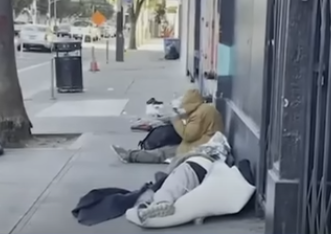Introduction
San Francisco has long battled with issues surrounding homelessness, drugs, and crime. Recent initiatives by the city claim some success, such as a decrease in visible homeless encampments. However, many argue that despite these efforts, the root issues remain, and for some, conditions have worsened. This report looks into the latest measures San Francisco has undertaken, exploring whether these efforts genuinely address homelessness or merely relocate the problem.

Efforts to Reduce Street Homelessness
City officials have reported a significant drop in transient tents across San Francisco, marking the lowest level since 2018. The city has increased the number of shelter beds, offering shelter to many of the homeless population. Officials conducting daily sweeps to clear out encampments and guide people to available services claim that conditions have somewhat improved. Between August and October, outreach teams engaged with homeless individuals over 3,000 times, leading to 365 accepted offers for shelter. Yet, this strategy of sweeping and re-sweeping areas highlights a challenge: many homeless individuals are either resistant to or unable to utilize city services, leaving them on the streets.
Challenges of Enforcement and Resistance
A notable difficulty in implementing these solutions is the resistance among homeless individuals to move into shelter spaces. In some cases, this stems from personal needs that cannot be met in shared housing environments. Albert Artist, a man who has been homeless for 23 years, explained that he cannot live with others due to issues stemming from time spent in prison. His hope for solitary accommodation has yet to be met, forcing him to live isolated on the streets. Many others share similar feelings, refusing offers for shared shelters and preferring to remain in familiar areas despite frequent police interventions.
Daily Struggles and Safety Concerns on the Streets
Sixth Street in San Francisco has become a focal point in the city’s ongoing struggle against homelessness, drug abuse, and crime. Known as an epicenter of these issues, the area witnesses routine conflicts between law enforcement and street occupants. The struggle for safety extends to those who work on the streets as well. City employees engaged in the sweeping operations frequently encounter hostility and danger; recently, a supervisor was attacked by a passerby while on duty. In this complex environment, daily clean-ups are accompanied by police, underscoring the safety risks involved for both workers and residents.
Economic Pressures and Crime
Economic pressures are worsening the situation for those on the streets. The price of fentanyl, a widely abused drug among the homeless population, has soared from $20 to $80 per gram due to recent disruptions in its supply chain following multiple arrests. However, the drug market remains active in areas like Sixth Street, challenging the effectiveness of law enforcement efforts to curb the spread of illegal substances. Homeless individuals report a heightened sense of vulnerability and anxiety, describing how their belongings are often stolen and how they feel “trapped” within the city due to increased restrictions on public transportation access, such as stronger fare gates on BART (Bay Area Rapid Transit).
Persistent Issues and the City’s Future
The enduring issue for San Francisco officials is finding ways to help those who consistently refuse shelter or services and use public spaces as permanent residences. As encampments are continuously dismantled, many homeless individuals are left with fewer places to go, forcing them into a constant state of displacement. The upcoming mayor faces this long-standing problem, which has eluded previous administrations. An effective solution would likely require addressing the root causes of homelessness, such as mental health issues, substance abuse, and systemic economic challenges.
City workers face dangerous and unpredictable situations as they enforce policies that aim to improve street conditions but often fail to deliver long-term solutions for individuals. Some argue that these “remove, rinse, and repeat” sweeps are only superficial measures that fail to provide the necessary support that might lead to permanent housing for the homeless population.
Conclusion
San Francisco’s homeless crackdown has achieved some visible improvements, such as reduced encampments and an increase in available shelter options. However, significant hurdles remain. Resistance to shelter, escalating drug prices, and safety risks complicate the city’s efforts, often leaving homeless individuals in worse conditions. Sixth Street remains emblematic of the city’s challenges with drugs, crime, and homelessness, showing that efforts so far have not been entirely effective. While the city continues to push for improvements, the incoming administration will face considerable pressure to devise sustainable solutions to aid those unwilling or unable to integrate into existing services. Until the root causes of homelessness are effectively addressed, San Francisco’s struggle is far from over.

















